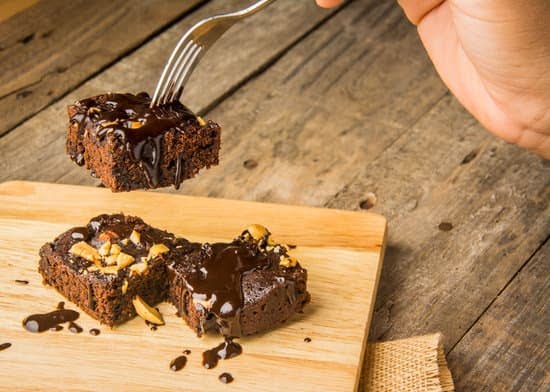Welcome to the fascinating and futuristic world of robot cake decorating. As technological advancements continue to propel us into the future, even the culinary arts have not been untouched by innovation. Robot cake decorating, a novel approach in the baking industry, is capturing the imaginations of both pastry enthusiasts and professionals alike.
In recent years, there has been a growing popularity and fascination with robot cake decorators. These machines have revolutionized the traditional art form of cake decoration with their precision, speed, and consistency in creating intricate designs. But how did we get here? Let’s take a brief glimpse into the history and evolution of this remarkable technique.
The concept of using robots for cake decorating can be traced back to early attempts in industrial automation. However, it is only in recent years that advancements in technology have made these machines more accessible and practical for commercial bakeries. Today, robot cake decorators are becoming increasingly common sights in professional kitchens around the world, elevating both productivity and efficiency.
Join us as we delve into the benefits, mechanics, technicalities, challenges, and possibilities of robot cake decorating. In this article, you will explore everything from cutting-edge technology to the artistry behind these creations. Get ready to be amazed at what artificial intelligence and machine learning can achieve when combined with human creativity.
Stay tuned for our next section where we will discuss “The Benefits of Robot Cake Decorators”.
The Benefits of Robot Cake Decorators
Robots have quickly become an integral part of many industries, including the culinary world. One area where robots are making a significant impact is in cake decorating. The use of robot cake decorators offers numerous benefits that have captured the attention and fascination of both professionals and enthusiasts alike.
One of the biggest advantages of using robots for cake decorating is their precision. Robots are programmed to execute precise movements, resulting in highly accurate and consistent designs on cakes. This level of precision is difficult to achieve consistently with human hands alone. Additionally, robots can work at a much faster pace than humans, allowing for increased productivity in commercial bakeries where large quantities of decorated cakes are often needed.
Another benefit offered by robot cake decorators is their ability to create intricate designs effortlessly. From complex patterns to precise lettering, robots can execute elaborate designs with ease thanks to their steady hands and precise movements. This level of detail would typically take skilled cake decorators a considerable amount of time and effort to accomplish. Robots also eliminate the risk of human error, ensuring that each cake decoration is uniform and flawless.
Furthermore, robot cake decorators enhance efficiency in commercial bakeries by streamlining the decorating process. With robotic arms equipped with specialized decorating tools, they can automate repetitive tasks such as layering frosting or applying edible decorations. This not only saves time but also reduces labor costs for bakeries while maintaining consistent quality control.
Overall, it’s clear that robot cake decorators offer numerous benefits over traditional methods of cake decorating. From their precision and speed to their ability to create intricate designs effortlessly, these robots are revolutionizing the way cakes are decorated. As technology continues to advance, it will be exciting to see how these benefits evolve further and contribute to the future landscape of the baking industry.
How Robot Cake Decorating Works
Robot cake decorating is a fascinating process that combines technology and culinary artistry. In this section, we will explore the step-by-step breakdown of how robot cake decorating works, including its key components, mechanics, and the software and programming required for custom designs.
The Process of Robot Cake Decorating
The process of robot cake decorating begins with the design phase. Skilled human designers create intricate and visually appealing cake designs using CAD (Computer-Aided Design) software. These designs are then translated into instructions that can be understood by the robot.
Once the design is finalized, it is time to prepare the cake for decoration. The cake is baked, cooled, and frosted to provide a smooth canvas for the robot decorator. A special turntable or conveyor system is used to easily rotate and move the cake during the decorating process.
Next, the robot decorator takes center stage. Equipped with a robotic arm that can move in three dimensions, the robot uses various tools and attachments to decorate the cake. These tools may include piping nozzles for creating intricate patterns, airbrushes for applying colors, or even 3D scanners for replicating complex designs from digital images.
The Key Components of a Robot Cake Decorator
A typical robot cake decorator consists of several key components. Firstly, there is the robotic arm itself, which provides precise movement and control required for creating intricate designs on cakes. The arm can be programmed to follow specific paths or movements according to the design instructions.
In addition to the robotic arm, there are various attachments or end effectors that enable different types of decorations. For example, a piping attachment allows the robot to pipe icing onto cakes in precise patterns. An airbrush attachment sprays edible colors onto cakes, creating beautiful gradients or shading effects.
To ensure accuracy and precision in decorating, many robot cake decorators are equipped with computer vision systems. These systems use cameras and sensors to track the cake’s position, detect obstacles, or even identify specific features on the cake that need decoration.
The Software and Programming Behind Robot Cake Decorating
Behind the scenes, robot cake decorating relies on sophisticated software and programming. Cake designers use CAD software to create detailed designs that are then translated into code that the robot can understand.
This code is usually written in a programming language specific to the robot manufacturer. The code instructs the robotic arm on how to move, when to dispense icing or color, and how much pressure or speed is required for each movement. Advanced robots may also use artificial intelligence algorithms or machine learning techniques to adapt their movements based on real-time feedback from sensors.
Overall, robot cake decorating involves a seamless integration of hardware and software components. It combines precision engineering with culinary creativity, resulting in stunning cakes that push the boundaries of traditional decorating techniques.
By understanding how robot cake decorating works, we can appreciate the technological advancements in this field while recognizing the importance of human collaboration and artistic vision in achieving truly remarkable cake designs.
Cutting-Edge Technology in Robot Cake Decorating
The field of robot cake decorating is constantly evolving with new advancements in technology. This section will explore the cutting-edge technologies that are shaping the world of robot cake decorating.
One of the most significant technological advancements in robot cake decorating is the use of robotic arms. These precision-controlled arms have the ability to manipulate various tools and decorations with unparalleled accuracy. They can delicately pipe icing, apply fondant, and even sculpt intricate designs on cakes. The use of robotic arms ensures consistent and flawless results, elevating the artistry of cake decorating to new heights.
Another groundbreaking technology being utilized in robot cake decorating is 3D scanning. With this technology, a scanner captures a three-dimensional image of a cake’s shape and size, allowing robots to create custom designs that perfectly fit each individual cake. This opens up endless possibilities for creating unique and personalized cakes that were once only imaginable. Additionally, automated decorating tools such as edible ink printers and airbrushes are also being integrated into robot cake decorators, further expanding their capabilities.
Artificial intelligence (AI) and machine learning are revolutionizing robot cake decorating by enabling machines to learn from data and improve their performance over time. AI algorithms can analyze vast amounts of design data and identify patterns to generate creative suggestions for cake decorations.
Machine learning algorithms can also adapt to different types of cakes, adjusting parameters such as speed and pressure to achieve optimal results. This combination of robotics and AI not only enhances efficiency but also pushes the boundaries of creativity in cake design.
The Artistry Behind Robot Cake Decorating
Robot cake decorating may be driven by innovative technology, but it does not diminish the artistry that goes into creating stunning cake designs. In fact, the intersection of technology and creativity is what makes robot cake decorating so unique and captivating.
While robots may have the precision and speed to create intricate designs, they lack the imagination and artistic vision that humans possess. This is where human designers come into play, collaborating with robots to achieve truly remarkable cakes. These designers work alongside the robots, providing input on design concepts and ensuring that the final product meets their artistic intent.
One example of this collaboration is seen in the use of 3D scanning technology. Human designers can create a physical prototype or sketch of a cake design, which is then scanned and recreated digitally. The robot can then use this digital model to produce an accurate replica of the design on the cake surface. This process allows for a seamless integration of human creativity with robotic precision.
The combination of technology and creativity in robot cake decorating opens up a whole new world of possibilities for bakers and pastry chefs. With robotic assistance, they can bring their wildest cake ideas to life with greater accuracy and efficiency than ever before. From intricate patterns to lifelike figurines, the artistry behind robot cake decorating knows no bounds.
As this field continues to evolve, we can expect even more breathtaking designs to emerge from this fusion of technology and artistry. Robot-decorated cakes are sure to become a centerpiece at weddings and other celebrations as people embrace the potential for customization and personalization that comes with this exciting technological development in the baking industry.
Overcoming Challenges in Robot Cake Decorating
Robot cake decorating offers numerous advantages and opportunities in the culinary world, but it also comes with its fair share of challenges. Overcoming these obstacles is crucial to ensuring the success and widespread adoption of robot cake decorators in commercial bakeries and other baking settings. Let’s explore some common challenges faced in robot cake decorating and the innovative solutions that are being developed to overcome them.
One of the main challenges in robot cake decorating is achieving intricate designs. Decorating a cake requires precision, attention to detail, and artistic flair, all of which can be complex for a machine to replicate.
With advancements in technology, however, modern robots are equipped with advanced sensors and cameras that enable them to analyze their surroundings and make precise movements. Machine learning algorithms are also being implemented to help robots learn from past mistakes and continuously improve their accuracy in replicating intricate designs.
Another challenge is working with delicate cake materials. Cakes can be fragile and easily damaged if handled incorrectly by a robot. To address this challenge, researchers are developing robotic grippers with soft and flexible materials that can delicately hold cakes without causing any harm. Additionally, robotic arms are being designed with force sensors that allow them to apply just the right amount of pressure while handling delicate cakes.
Furthermore, programming robots for custom designs poses its own set of challenges. Each cake design varies in complexity, shape, size, and color combinations. Designers need an efficient way to communicate different elements of a design to the robot so that it can accurately produce the desired result. Fortunately, advancements in software have made it easier for designers to input custom designs into robot cake decorators through user-friendly interfaces or even by simply uploading an image or 3D model.
The Future of Robot Cake Decorating
The future of robot cake decorating holds immense potential for revolutionizing the wedding industry and celebrations as a whole. With advancements in technology and an increasing demand for unique and personalized cakes, the role of robot cake decorators is expected to expand significantly.
One of the key ways in which robot cake decorating can shape the future is through customization and personalization. As robots become more advanced, they will be able to create intricate designs that are tailored to individual preferences. This means that couples will have the opportunity to have cakes that truly reflect their personalities and tastes, making their special day even more memorable.
Moreover, the use of robots in cake decorating can greatly enhance efficiency and productivity in the baking industry. Robots are capable of working at a much higher speed than humans, ensuring faster turnaround times for orders. Additionally, they can consistently reproduce intricate designs with precision, eliminating any human errors that may occur during the decoration process.
| Advantages | Benefits |
|---|---|
| Precision | Ensures consistent quality in cake decorations |
| Speed | Reduces production time and increases efficiency |
| Consistency | Produces identical designs every time |
In addition to customization and improved efficiency, robot cake decorators also offer bakers the opportunity to explore new design possibilities. By collaborating with designers who specialize in robotics and programming, bakers can push boundaries and create cakes that were once unimaginable. These collaborations not only foster creativity but also introduce innovative techniques that can elevate cake designs to new heights.
With all these benefits combined, it is clear that the future of robot cake decorating is incredibly promising. As technology continues to advance and robots become more sophisticated, we can expect to see even more incredible designs and efficiencies in the field of cake decoration. It’s an exciting time for both bakers and consumers, as this technological development opens up a wealth of possibilities for creating visually stunning and personalized cakes.
Application of Robot Cake Decorating in the Baking Industry
Robotic technology has revolutionized various industries, and the baking industry is no exception. The application of robot cake decorating in the baking industry has introduced a new level of precision, efficiency, and creativity. This section will explore the practical applications of robot cake decorating in both small-scale and large-scale baking settings, highlighting the impact on efficiency, cost-effectiveness, and quality control.
Efficiency
One significant advantage of using robot cake decorators in the baking industry is the improvement in efficiency. Robots are capable of working continuously without fatigue or breaks, allowing for uninterrupted production. This increased productivity results in faster cake decorating processes and shorter lead times for orders.
Furthermore, with robots performing intricate decorating tasks that would normally take considerable time for human decorators, bakery owners can streamline their operations and reduce labor costs. Instead of dedicating a team of decorators to work on multiple cakes simultaneously, a single robot can handle several cakes simultaneously.
Cost-Effectiveness
In addition to enhancing efficiency, robot cake decorating also offers cost-effectiveness to bakeries. By using robots instead of human decorators, bakery owners can significantly reduce labor expenses. Human decorators often require extensive training to master complex designs or techniques, which incurs additional costs for the bakery.
Robots also minimize wastage as they have precise control over the amount of frosting or icing applied to cakes. With accurate measurements and consistent application, there is less material wasted compared to manual cake decorating methods where inconsistencies may lead to excess frosting being scraped off. Overall, robotic cake decorators contribute to substantial savings for bakery owners.
Quality Control
Maintaining high standards of quality is crucial in the baking industry. Robot cake decorators ensure consistency and accuracy in every design they create. They follow programmed instructions meticulously without deviating from them. This ensures that each cake decoration meets the desired specifications consistently.
Moreover, robotic technology allows for greater precision in intricate designs that can be difficult to achieve manually. Robots possess the ability to replicate exact patterns and shapes, resulting in flawless and visually appealing cake decorations.
By embracing robotic technology for cake decorating, the baking industry can greatly benefit from improved efficiency, cost-effectiveness, and quality control. Bakeries of all sizes can leverage this technology to streamline their operations, reduce costs, and produce consistent, high-quality cakes. The next section will share success stories of bakeries that have already embraced robot cake decorators.
Conclusion
In conclusion, the world of robot cake decorating offers a unique and innovative approach to the culinary world. This emerging trend has quickly gained popularity and fascination, thanks to its numerous benefits and advancements in technology. Robots offer precision, speed, and consistency in creating intricate designs, enhancing productivity and efficiency in commercial bakeries.
The process of robot cake decorating involves a step-by-step breakdown of key components and mechanics of a robot cake decorator, as well as the software and programming required for custom designs. Cuttting-edge technology has allowed for the development of robotic arms, 3D scanners, and automated decorating tools that are improving the capabilities of robot cake decorators.
The intersection of technology and creativity is truly fascinating in robot cake decorating. Human designers collaborate with robots to achieve stunning cake designs that showcase both artistry and technical competence. The potential advancements in this field are vast, with possibilities for customization and personalization that could shape the future wedding industry and celebrations.
As we embrace this exciting technological development in the baking industry, it is important to acknowledge the challenges faced in robot cake decorating. Intricacy of designs and delicacy of cake materials present obstacles that require innovative solutions and ongoing research. However, with continued advancements in technology, these challenges are being overcome.
Overall, robot cake decorating holds great potential for revolutionizing the baking industry. Its impact on efficiency, cost-effectiveness, and quality control cannot be overstated. Bakeries across various scales have already started utilizing robot cake decorators with success stories to share.
In closing, it is essential for readers to explore and embrace this exciting technological development in the baking industry. By embracing the robot revolution in cake decorating, we can unlock new possibilities for creativity while reaping the many benefits it offers. Let us embrace this fusion of artistry and technology as we move towards a future where cakes are not just delicious but also works of mechanical marvels.
Frequently Asked Questions
What app can I use to design a cake?
There are several apps that you can use to design a cake, depending on your preferences and device. One popular app is “Cake Designer,” which allows you to create and customize cakes with various shapes, sizes, colors, and decorations. It provides a user-friendly interface where you can experiment with different designs, add text, images, and even preview the final result in 3D.
Another option is “iCakeNotes,” which offers a range of cake design tools like templates, frosting suggestions, and even the ability to sketch directly on the cake image. These apps provide a convenient way for both amateur bakers and professionals to visualize their cake designs before bringing them to life.
How to decorate cake without cake turntable?
Decorating a cake without a cake turntable certainly requires some creativity and improvisation. One approach is to place the cake on an upside-down bowl or sturdy cylindrical object that is stable enough to support its weight while allowing it to rotate manually by gently spinning it with your hands.
This method may require some patience and steady hands, but it can work well for smaller cakes or when a turntable is not readily available. Alternatively, you could try using a baking sheet lined with parchment paper or a silicone mat as a makeshift “turntable” by gently spinning it as needed while decorating the cake.
How to decorate a cake with stars?
Decorating a cake with stars can add an elegant touch and create an eye-catching design element. There are various ways to achieve this effect depending on your desired outcome. One popular method involves using star-shaped piping tips with frosting bags filled with buttercream or royal icing of your choice. By holding the piping bag at a slight angle above the cake surface, gently squeeze out small star shapes by applying consistent pressure while pulling upward steadily without releasing pressure until achieving the desired size for each star.
You can create patterns or clusters of stars in different colors or sizes to enhance visual appeal further. Another option is using pre-made fondant or gum paste star cutouts, which can be placed strategically on the cake’s surface or attached to thin, flexible wire stems for a more dimensional effect. These versatile techniques allow you to experiment and showcase your creativity when decorating cakes with stars.

Welcome to our cake decorating blog! My name is Destiny Flores, and I am the proud owner of a cake decorating business named Cake Karma. Our mission is to provide delicious, beautiful cakes for all occasions. We specialize in creating custom cakes that are tailored specifically to each customer’s individual needs and tastes.





